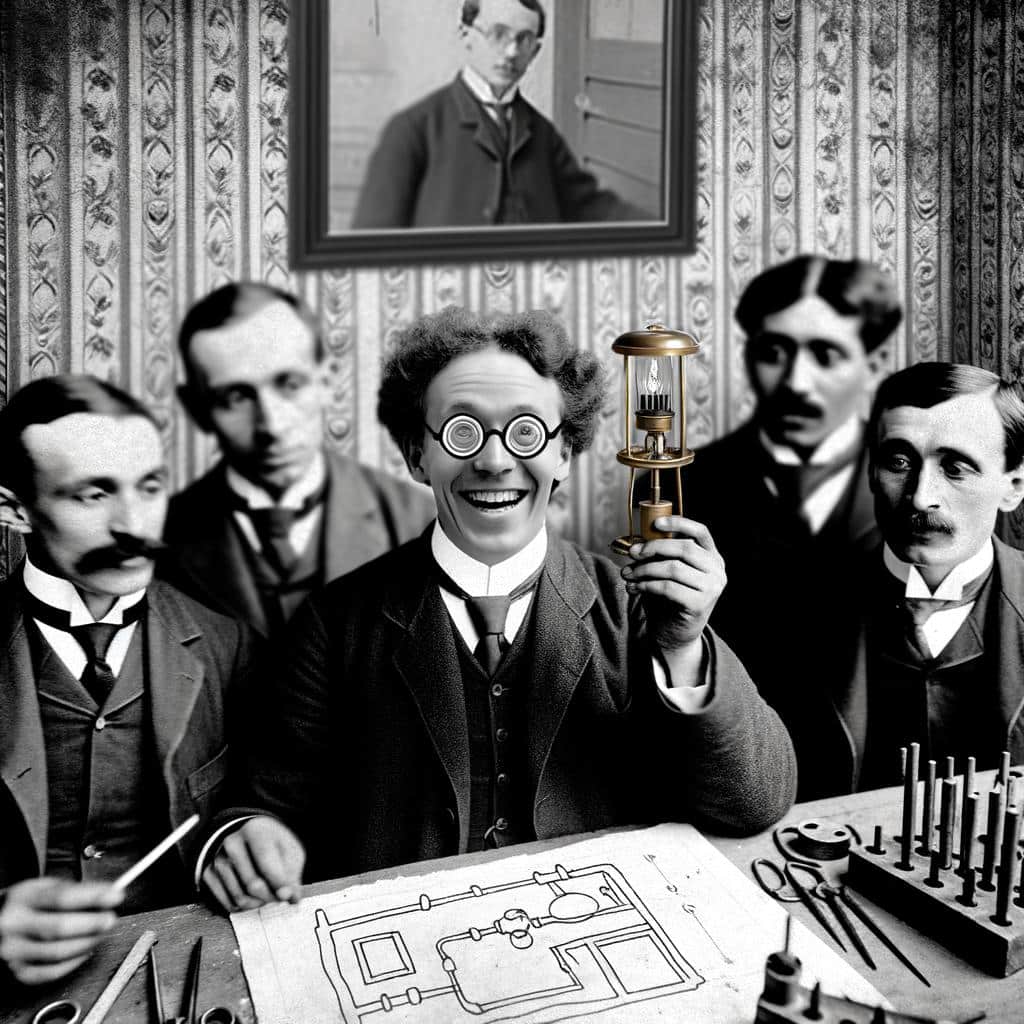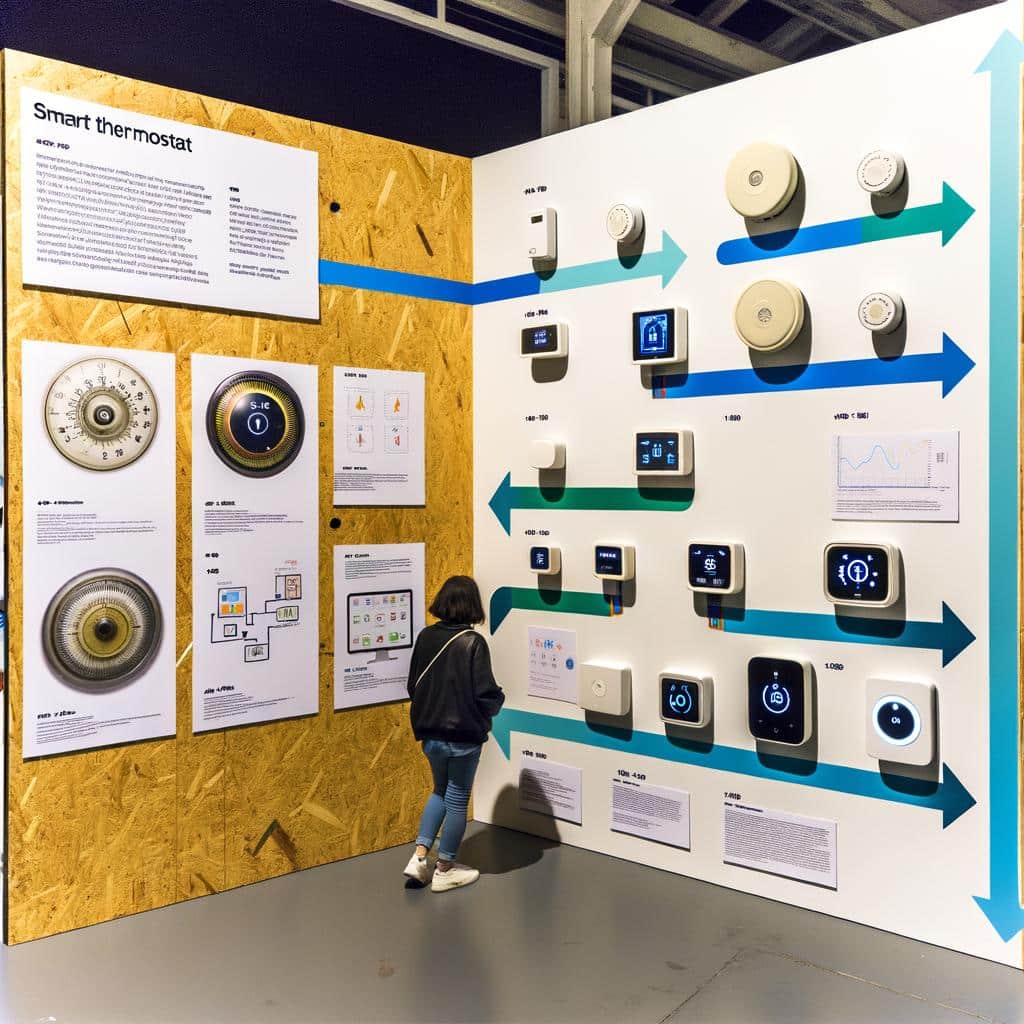From Fahrenheit’s mercury-filled glass sliders to the triumph of digital touches and Wi-Fi advancements, the humble thermostat has undergone a thrilling transformation. Much like the silent yet pulse-quickening beat of evolution that propels life forward, the thermostat, an unassuming household staple, has meticulously adapted to our ever-growing needs and technological capabilities. “From Mercury to Digital: The Evolution of Thermostat Innovation” is an intriguing odyssey through the remarkable changes that have revolutionized the way we control our indoor climates. Fasten your seat belts as we embark on an exciting journey, traversing the intriguing storyline of thermostat innovation!
The Birth of Home Heating: Mercury Thermostats
The introduction of mercury thermostats in the early 19th century marked a significant leap forward in the evolution of home heating technology. Prior to this innovation, homeowners manually cycled their heating system, causing tremendous waste of fuel and inefficient heating. The simplicity and efficiency of mercury-based thermostats made them a staple in households, accelerating the popularization of more comfortable and practical living environments.
- Mercury-filled glass vial: The heart of these classic thermostats is a glass vial filled with mercury. When the temperature falls, the vial tips causing the mercury to move and establish an electrical connection that triggers the heating system.
- Temperature sensing coil: Wrapped around the glass vial, this coil made of bi-metallic strip expands and contracts with temperature changes facilitating the tilting of the vial.
- Adjustable set point: A noteworthy feature of the mercury thermostat is the adjustable set point that allows homeowners to manually set the desired temperature.
Introducing the evolution of thermostats with the dawning of the digital age, the bulky and slightly hazardous mercury thermostats gave way to sleeker, more efficient digital thermostats. These modern gadgets not only maintained a more consistent temperature but also began offering programmability, allowing homeowners to tailor their heating schedule based on daily and nightly habits.
| Technology | Introduced | Key Benefits |
|---|---|---|
| Mercury Thermostats | Early 19th century | Efficiency, adjustable set point |
| Digital Thermostats | Late 20th century | Programmability, consistency |
Beyond programmability, these digital variants introduced features like Wi-Fi connectivity for truly remote control, advanced energy savings, and smart home integration, positioning thermostats not just as heating controllers, but as central components of a modern, energy-efficient home.
Dial and Slide: Enter the Analog Era
The initial introduction of thermostats takes us back to the quiet by-lanes of the analog era. Remember those large, cream-colored thermostats with a circular dial and a tiny slide? The one that served diligently as the house’s temperature regulator, often positioned in the hallway or living room. That’s our first encounter with thermostats, often termed as “mercury thermostats” due to the use of the mercury switch inside. The days of walking to the thermostat to manually adjust and regulate your home temperature were not so far in time.
Mercury thermostats were designed with simplicity in mind, comprising of a coiled bi-metal element and a mercury switch. An increase or decrease in temperature caused the coil to contract or expand, thereby tilting the mercury switch. Making mercury thermostats both accurate and reliable. However, technological advances paved the way for digital thermostats, offering programmable options and precise control over heating and cooling schedules. These newer versions enabled the users to set different temperatures for different times of the day and even separate schedules for weekdays and weekends.
| Honeywell T87 | Mercury Thermostat | Introduced in 1953 |
| Honeywell MagicStat/CM67 | Digital Thermostat | Introduced in the 1980s |
- Mercury thermostats offer simple and reliable operation
- Digital thermostats provide accurate and programmable control, from temperature settings to scheduling variability
- Both units have their own charm, and their suitability is wholly dependent on the user’s need and comfort

The Great Shift: Unveiling Digital Thermostats
Picture the scene: It’s the early 20th century. Thermostats are entirely mechanical, containing a small, glass tube filled with mercury. This served as an electrical switch that turns on and off based on the room temperature. But as we moved in to the modern age, mercury thermostats started to give way to their digital counterparts. Leaving behind the hazardous mercury, the digital age birthed thermostats with liquid crystal displays, microcontrollers and sophisticated software.
These digital thermostats are now becoming the ultimate hot topic in the world of smart homes due to their multitude of benefits:
- Improved Energy Efficiency: With programmable settings, digital thermostats help you to manage the temperature of your home more efficiently, ultimately cutting down on energy usage and costs.
- Precision: No need to depend solely on the ‘feel’. Digital thermostats give accurate readings and precise control over temperatures.
- Convenience: No more fiddling with dials and mercury tubes. Digital thermostats can be monitored and managed remotely with modern tech gadgets.
Coming a long way from solely mechanical switches to modern digital displays, thermostat technology has distinctly transformed.
| Sr. No | Type | Release Year | Special Feature |
|---|---|---|---|
| 1 | Mercury Thermostat | 1885 | Used Bimetallic Strips |
| 2 | Digital Thermostat | 1980 | Programmable features |
| 3 | Smart Thermostat | 2007 | Wi-Fi Connectable, AI Learning |

Connecting Homes: The Rise of Programmable Thermostats
As we journey from the era of the rudimentary mercury thermostats to the advanced programmable ones, it is astounding to note the remarkable evolution that has occurred in the field of temperature control technology. Once upon a time, our predecessors would huddle around open fires for warmth. These days, all it takes is a simple voice command to our digital device to adjust the room temperature to our exact specifications. The revolution in thermostat innovation is truly remarkable and continues to bring comfort into our homes, one degree at a time.
Mercury thermostats, an example of mechanical thermostats, were the first to see widespread use. These devices used a bi-metallic strip or a bulb full of mercury to break and complete a circuit. This process converted temperature fluctuations into mechanical movements.
- The Pros : They were simple, reliable, and long-lasting.
- The Cons : That said, they lacked precision and convenience.
Enter the digital programmable thermostats, that heralded a new dawn of convenience and efficiency. These electronic devices use temperature-sensitive semiconductors. By programming the device, you could set temperature changes for different times of the day. This feature allowed for energy-saving consumption.
- The Pros : They offer precision, convenience, and energy efficiency.
- The Cons : More expensive than their mechanical counterparts, and some users may find them complex to program.
| Thermostat Type | Accuracy | Energy Efficiency | Price |
|---|---|---|---|
| Mercury Thermostat | Low | Low | Cheap |
| Digital Programmable Thermostat | High | High | High |
With the aesthetic, functional, and technological advancements in programmable thermostats, we’ve transitioned from basic temperature control systems to smart, interconnected homes. This evolution provides us with more convenience, accuracy, and efficiency than ever before.

Revolution on Wall: Unpacking Smart Thermostat Innovation
There’s a revolution raging on your home’s wall, and it’s all because of the smart thermostat. Since the time of antiquated mercury-based counterparts, thermostat technology has undergone a massive transformation. Smart thermostats are the crème de la crème of this evolution, boasting advanced features such as WiFi connectivity, geofencing, learning algorithms, and energy use tracking. These innovative devices now provide homeowners with enhanced energy efficiency, cost savings, and unprecedented control over their home’s climate.
Depicting the advancement of this technology can be best accomplished by observing the three major phases of thermostat innovation. The early era saw the rise of the mercury-based thermostat; a simple, yet revolutionary device of its time. This phase brought temperature control into homes, but it wasn’t efficient or accurate. The digital wave was characterized by the shift to programmable thermostats. These devices offered enhanced control, allowing homeowners to set schedules and conserve energy during periods when their homes were unoccupied. The smart era is where we find ourselves today, marked by thermostats that not only offer scheduling but adapt to our daily routines, sense occupancy, and even adjust themselves based on weather forecasts.
| Evolutionary Stages | Key Features |
|---|---|
| Early Era – Mercury Thermostats | Temperature control inside homes |
| Digital Wave – Programmable Thermostats | Set schedules, conserve energy |
| Smart Era – Smart Thermostats | Adaptive routines, occupancy sensing, weather-adjusted settings |
In conclusion, the journey from mercury to digital to smart has brought a revolution on the wall of every home. The smart thermostat innovation has truly redefined homes and continues to further drive the home automation industry.

Our Future Climate: Advancements and Recommendations in Thermostat Technology
Once relying heavily on mercury-based technology for temperature regulation, modern day thermostats have certainly come a long way. From basic bimetallic thermostats that responds to temperature-induced mechanical changes to sophisticated programmable models offering optimal environmental control, this evolution reflects our increasing awareness and concern towards energy consumption and environment sustainability. Making homes “smarter” in controlling temperature has more benefits than just creature comfort. It contributes to reduced energy usage, lowered utility bills, and corners a smaller carbon footprint.
Let’s take a glimpse into some of the major innovations and recommendations for our future climate control:
- Smart thermostats: Revolutionising the way we heat and cool our homes, these high-tech devices allow users to alter the settings remotely via a smartphone. Many smart thermostats even learn from your behaviour, gradually adapting to your temperature preferences.
- Geofencing: This technology triggers certain actions based on your smartphone’s location. Imagine your thermostat starting to heat your home when you’re a few miles away, ensuring it’s warm enough on your arrival.
- Zoned Heating Systems: For larger homes, handling temperature for different rooms separately allows for efficient energy use. Zoned Heating Systems gives the homeowner the flexibility to heat different spaces base on their usage.
(Adopting these advancements) can not only optimize your home’s energy usage, but also spearhead to a sustainable future. Let’s embrace these technologies and contribute towards combating climate change. Meanwhile, stay tuned for more insights on this topic.
| Thermostat Evolution Stage | Significant Feature |
| 1. Non-programmable Thermostats | Manual control of temperature |
| 2. Programmable Thermostats | Adjustable based on a set schedule |
| 3. Smart Thermostats | Remote control via smart devices |
| 4. AI Integrated Thermostats | Adaptive to user behaviour and preferences |
From the moment the first mercury-loaded tubes revolutionized indoor climate control, shining like miniature lighthouses in our homes, to the dawn of the digital era, where LED screens glitter with vivacious cues and prompts, capturing our slightest thermal whim, the story of thermostat innovation has been a fable of unceasing refinement and creative audacity. How far the technology will evolve, no one can predict precisely. As we bid farewell to this exploration of conviction and imagination in the sphere of indoor climate control, remember, the next time you adjust your wall-mounted sentinel of comfort, that you are participating in a centuries-long dance of technology, driven relentlessly forwards by humankind’s quest for perfection. The story of thermostat innovation continues to unfold, and we’re witnessing it – right here, right, and always now. So go on, change the temperature. See what happens next.




